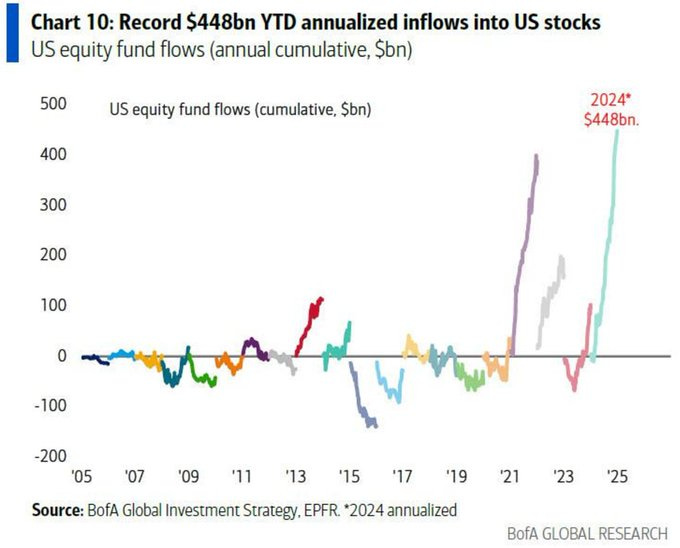Financial markets often mirror the human experiences found in other realms of life, where euphoria and ambition can cloud judgment and obscure the risks that lie ahead. One striking parallel can be drawn between market bubbles and the gripping narrative of Jon Krakauer’s Into Thin Air, a harrowing account of climbers caught in the deadly 1996 Mount Everest disaster. Just as the climbers were seduced by the allure of summiting the world’s highest peak, investors in euphoric markets are often driven by a fervent desire for gains, sometimes ignoring the critical question: “How do we safely get back down?”
In Into Thin Air, the climbers’ focus on reaching the summit came at a high cost. Many ignored the warning signs—a tightening weather window, depleted oxygen supplies, and fading daylight—in their pursuit of a singular goal. This fixation blinded them to the fact that summiting is only half the journey. Similarly, in financial markets, euphoria can lead to a “peak mindset,” where investors are caught up in a frenzy of rising asset prices, driven by fear of missing out (FOMO) and an overestimation of the market’s ability to sustain its upward trajectory. Fundamentals are often disregarded, just as climbers might push past their physical limits without considering the grueling descent.
The descent—whether from Everest or a market high—is where the true risk lies. On Everest, the climbers faced a treacherous route back to base camp, battling extreme fatigue, frostbite, and a sudden, violent storm. For investors, the descent comes in the form of corrections, crashes, or prolonged bear markets, where the same exuberance that drove prices sky-high can now magnify losses. The psychological shift from greed to fear can be as abrupt and devastating as a Himalayan storm, catching even seasoned participants off guard.
The key lesson from both the Everest tragedy and financial market bubbles is the importance of preparedness and risk management. In climbing, this means knowing when to turn back, even if it means abandoning the summit. In investing, it means maintaining a balanced portfolio, setting clear exit strategies, and resisting the pull of herd mentality. As Krakauer’s story illustrates, the ultimate success is not just reaching the peak—it’s making it back down safely. Investors would do well to remember this as they navigate the exhilarating but perilous terrain of euphoric markets.
Am I suggesting this is an area to short the market? No.
We are entering some of the strongest seasonality on low volume, a very bad combination for shorting markets. I am simply pointing out that it is great to enjoy the incredible performance of the past year but to also start preparing for what the next phase of this market might look like.





